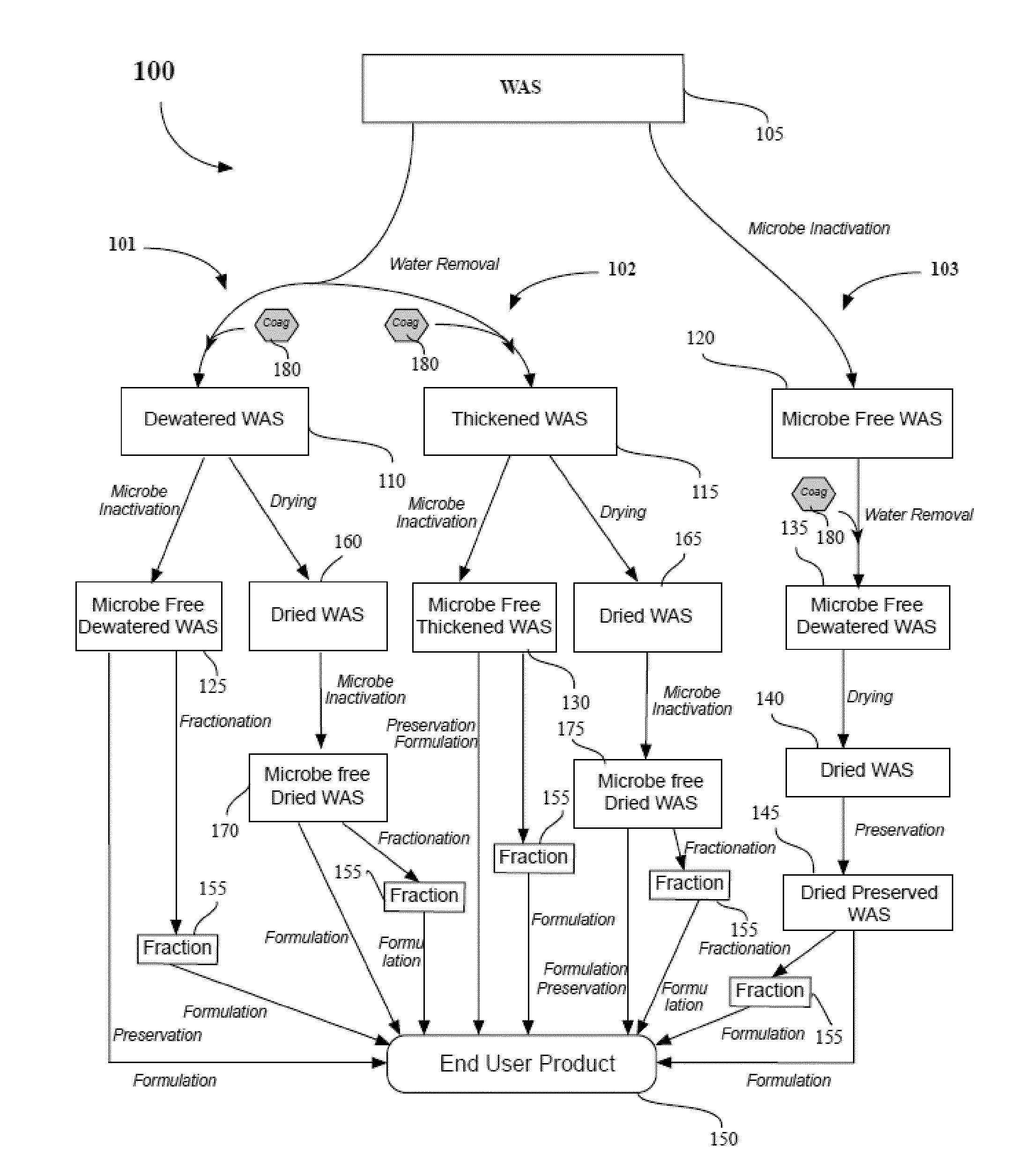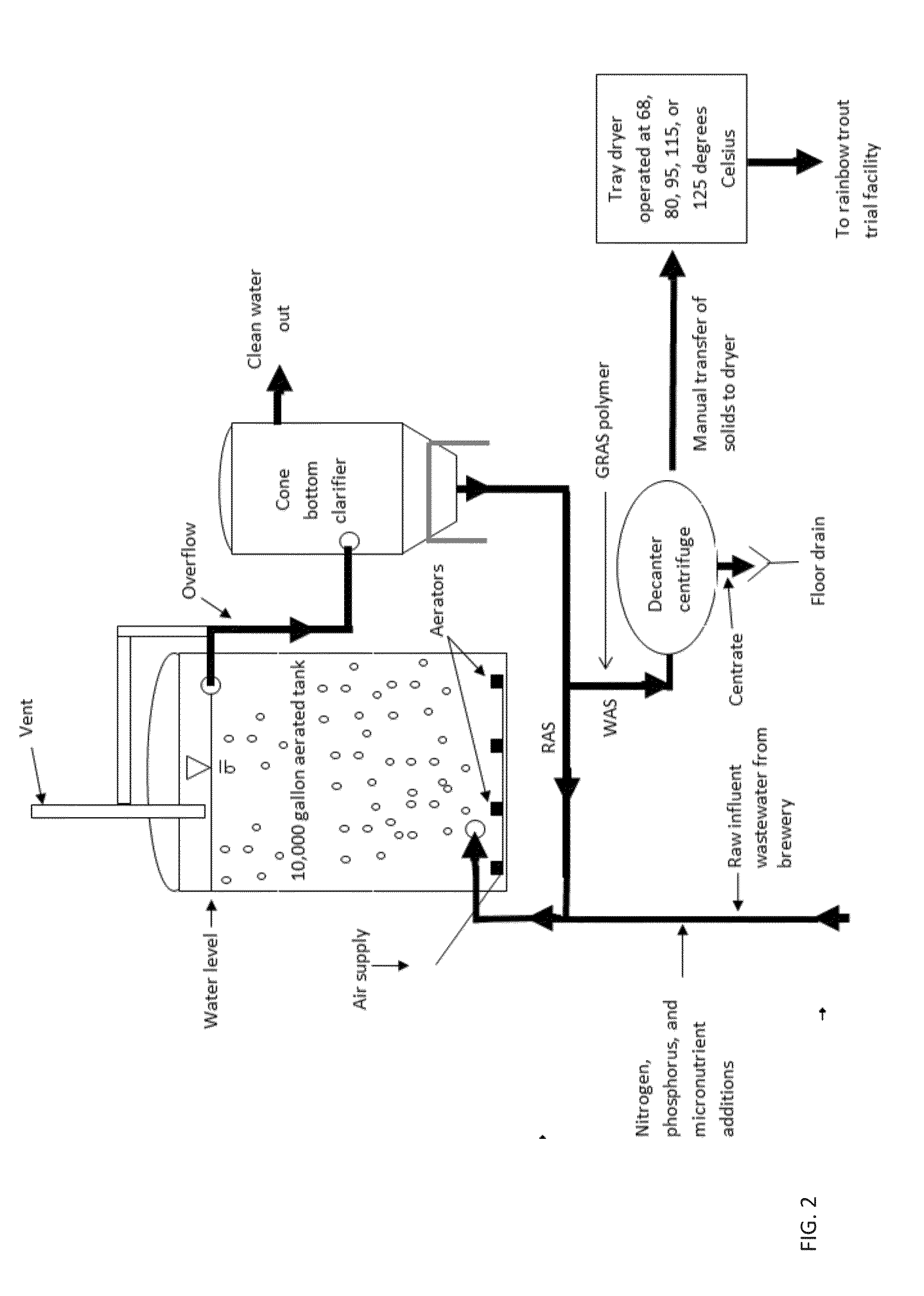Methods of processing waste activated sludge
a technology of activated sludge and waste water, which is applied in the direction of biological sludge treatment, biological water/sewage treatment, peptides, etc., can solve the problems of damage and/or destruction of beneficial microbial cells such as protein, vitamins and coenzymes, and the prior art wastewater treatment process exhibits significant drawbacks
- Summary
- Abstract
- Description
- Claims
- Application Information
AI Technical Summary
Benefits of technology
Problems solved by technology
Method used
Image
Examples
example 1
Heat Treatment of Waste Activated Sludge
[0125]An aqueous waste stream containing BOD, nutrients, and dissolved oxygen is aerated in a tank or basin to produce a cellular biomass. This biomass is then separated from the bulk water in a clarifier, dissolved air flotation system, membrane filter, or other means, a portion of it is returned to the aerobic basin, and a portion of it is removed from the system as waste activated sludge. This waste activated sludge is then heated to a temperature of about 121° C. to about 155° C. within an enclosed pressure vessel to produce a commercially sterile waste activated sludge.
example 2
Heat Treatment of Waste Activated Sludge
[0126]An aqueous waste stream obtained from a beverage production plant, a potato processing plant, a corn processing plant, a sugar processing plant, a citrate producing plant, a yeast manufacturing plant, a meat rendering plant or a dairy production plant is treated as disclosed in Example 1.
example 3
Heat Treatment of Waste Activated Sludge
[0127]An aqueous waste stream from a beverage production plant such as a beer brewery, a distillery, a palm oil mill, or a fruit juice production facility is treated as disclosed in Example 1.
PUM
| Property | Measurement | Unit |
|---|---|---|
| temperature | aaaaa | aaaaa |
| temperature | aaaaa | aaaaa |
| temperatures | aaaaa | aaaaa |
Abstract
Description
Claims
Application Information
 Login to View More
Login to View More - R&D
- Intellectual Property
- Life Sciences
- Materials
- Tech Scout
- Unparalleled Data Quality
- Higher Quality Content
- 60% Fewer Hallucinations
Browse by: Latest US Patents, China's latest patents, Technical Efficacy Thesaurus, Application Domain, Technology Topic, Popular Technical Reports.
© 2025 PatSnap. All rights reserved.Legal|Privacy policy|Modern Slavery Act Transparency Statement|Sitemap|About US| Contact US: help@patsnap.com



